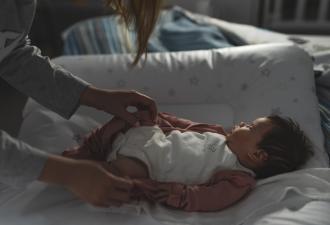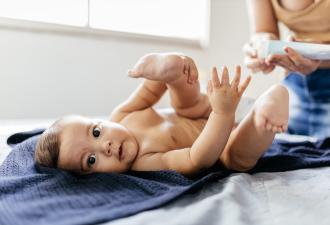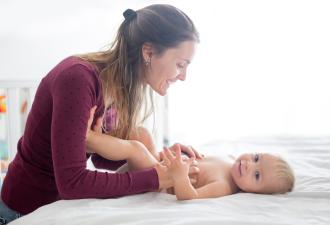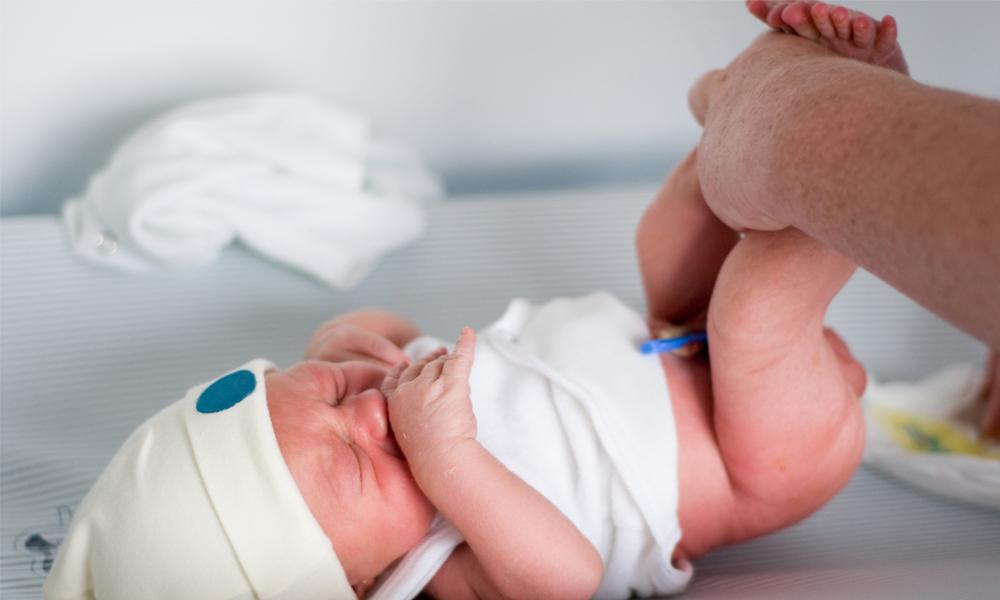
Diaper rash
Diaper rashes do not always have the same form.
Possible symptoms:
• Your baby's diaper area looks irritated and red.
• The skin is slightly swollen and warm to the touch.
Diaper rashes can be mild and limited (some red spots in a small area) or more intensive and extensive (with red oedemas expanding to the baby's abdomen and thighs).
It is a good idea to consult your pediatrician, although most cases are nothing to worry about. The treatment of skin rashes is an integral part of baby care, especially during their first year of life.
What causes these skin rashes?
Diaper rashes can be caused by anything, from the new food it tasted to its urine. The main reasons are:
• Moisture. It is important that you change your baby's diaper regularly, in accordance with the instructions of the pediatrician, and immediately if the baby poops. If poop remains for several minutes in contact with the skin, it will, in all probability, cause irritation.
• Rash or sensitivity to chemical substances . Diaper rashes may be caused by friction of the diaper on the skin, especially when the skin is sensitive to chemical substances, such as the fragrances used in some baby care products or washing machine detergents. Rashes can also be caused by the shower gel, lotion or talcum powder that you use, which may not be compatible with the sensitive skin of your baby. It is best to use skincare products with gentle composition and friendly design. Babylino Sensitive Diapers with Sensitive, skin-friendly design are certified by Oeko-Tex® Standard 100 for absence of harmful substances. Designed with carefully selected friendly materials, they offer absorbency and certified, safe, friendly protection for sensitive baby skin. Dermatologically tested.
• New foods. It is common for babies to have diaper rashes when they start eating solid foods or try new foods (e.g when eating egg for the first time). These changes in its diet can also affect the composition of stools, while they may also lead to increased bowel movement. If you are breastfeeding, it could even be due to a reaction of the skin of your baby to something you ate.
• Infection. The diaper area is warm and moist, namely the ideal environment for the growth of bacteria and fungi. Therefore, a bacterial or fungal inflammation may be easily developed causing rashes, especially in the folds of your baby's skin. Furthermore, babies on antibiotics (or whose breastfeeding mothers are on antibiotics) sometimes have fungal infections, as antibiotics reduce the number of healthy bacteria that help keeping fungi under control.
What is the best way to deal with diaper rashes?
Keep your baby clean and dry, regularly changing its diaper. During the night, have somewhere near you, everything you need for diaper change and feeding your baby. You can use baby wipes for cleaning the sensitive area (the movement should be from front to back without repetition). Dab your baby's skin without rubbing! If recommended by your paediatrician, at every diaper change use a protective cream on your baby's skin, forming a protective layer, thus helping protect the skin from urine and poop. Fasten the diaper, but not too tightly (after fastening, you should be able to fit two fingers in the waistline of the diaper.) When the weather permits it and your baby can play outdoors or in an area that you don't whether it will get dirty, leave your baby without a diaper (with cream) for as long as possible every day. Exposure to air will accelerate healing. You can also leave it to sleep naked, using an absorbent underpad to protect your mattress.
